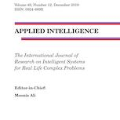Locating objects referred to in natural language poses a significant challenge for autonomous agents. Existing CLIP-based open-vocabulary methods successfully perform 3D object retrieval with simple (bare) queries but cannot cope with ambiguous descriptions that demand an understanding of object relations. To tackle this problem, we propose a modular approach called BBQ (Beyond Bare Queries), which constructs 3D scene spatial graph representation with metric edges and utilizes a large language model as a human-to-agent interface through our deductive scene reasoning algorithm. BBQ employs robust DINO-powered associations to form 3D objects, an advanced raycasting algorithm to project them to 2D, and a vision-language model to describe them as graph nodes. On Replica and ScanNet datasets, we show that the designed method accurately constructs 3D object-centric maps. We have demonstrated that their quality takes a leading place for open-vocabulary 3D semantic segmentation against other zero-shot methods. Also, we show that leveraging spatial relations is especially effective for scenes containing multiple entities of the same semantic class. On Sr3D and Nr3D benchmarks, our deductive approach demonstrates a significant improvement, enabling retrieving objects by complex queries compared to other state-of-the-art methods. Considering our design solutions, we achieved a processing speed approximately x3 times faster than the closest analog. This promising performance enables our approach for usage in applied intelligent robotics projects. We make the code publicly available at linukc.github.io/bbq/.
翻译:暂无翻译




